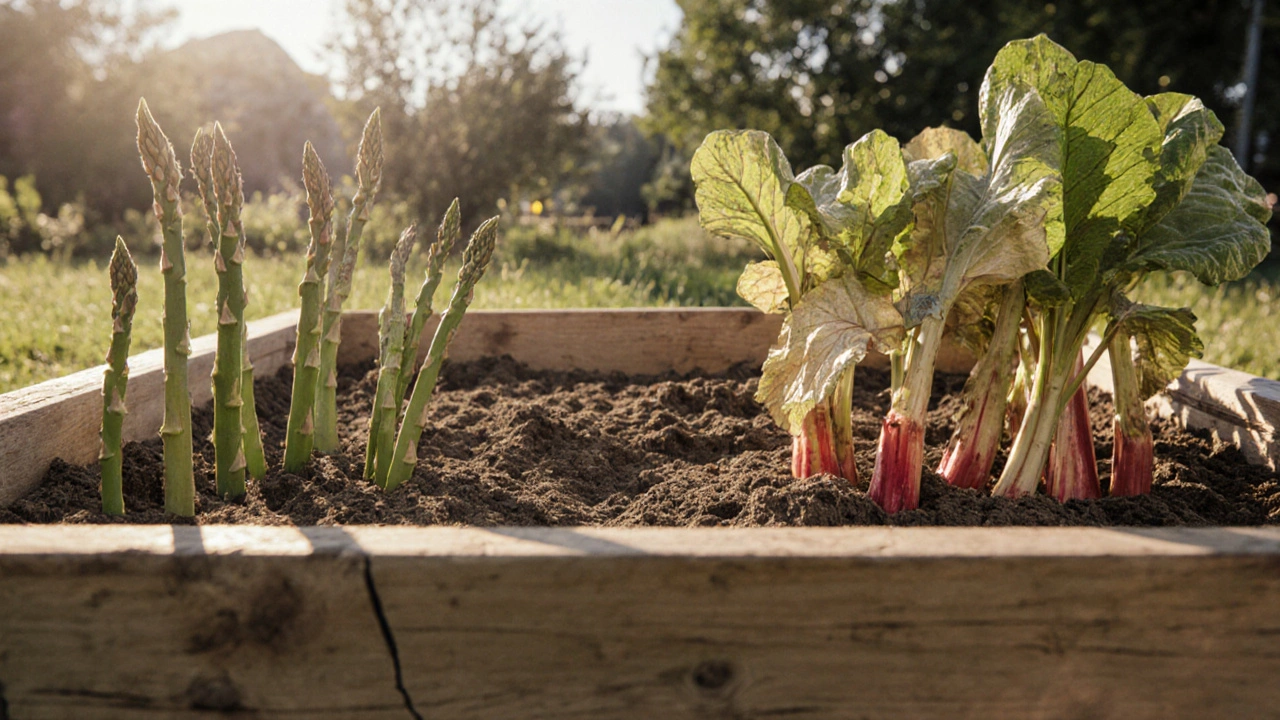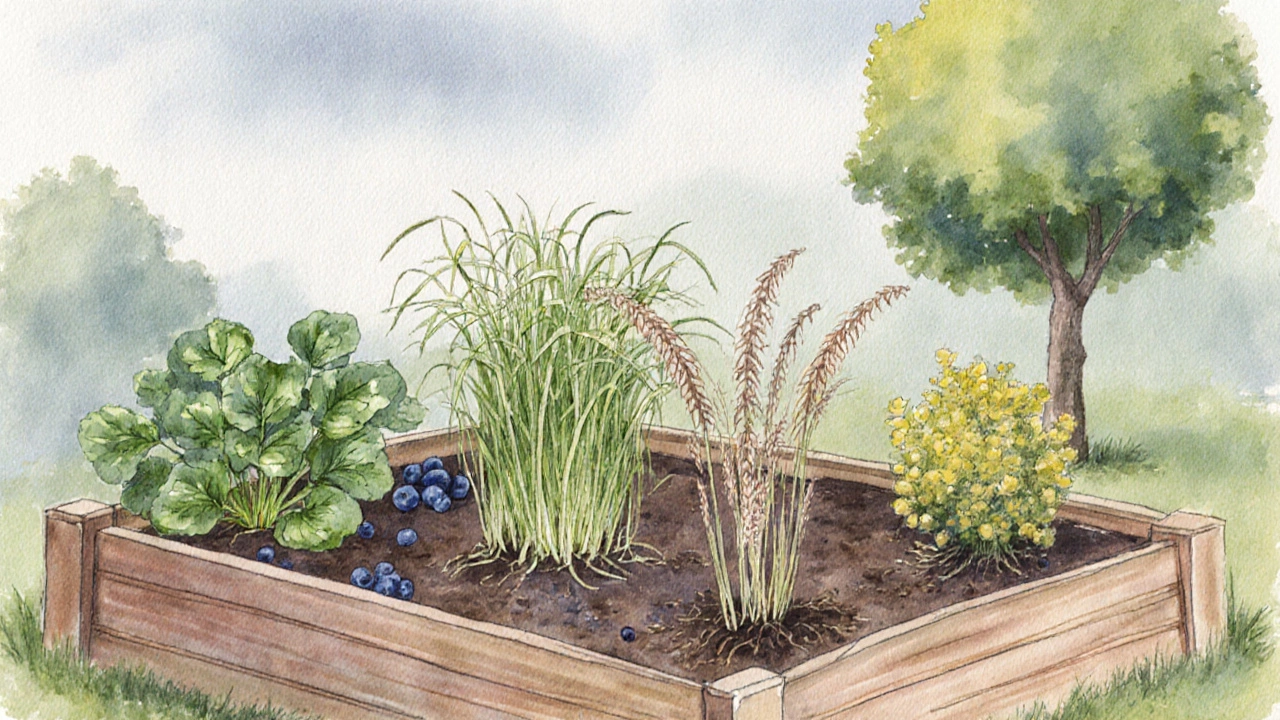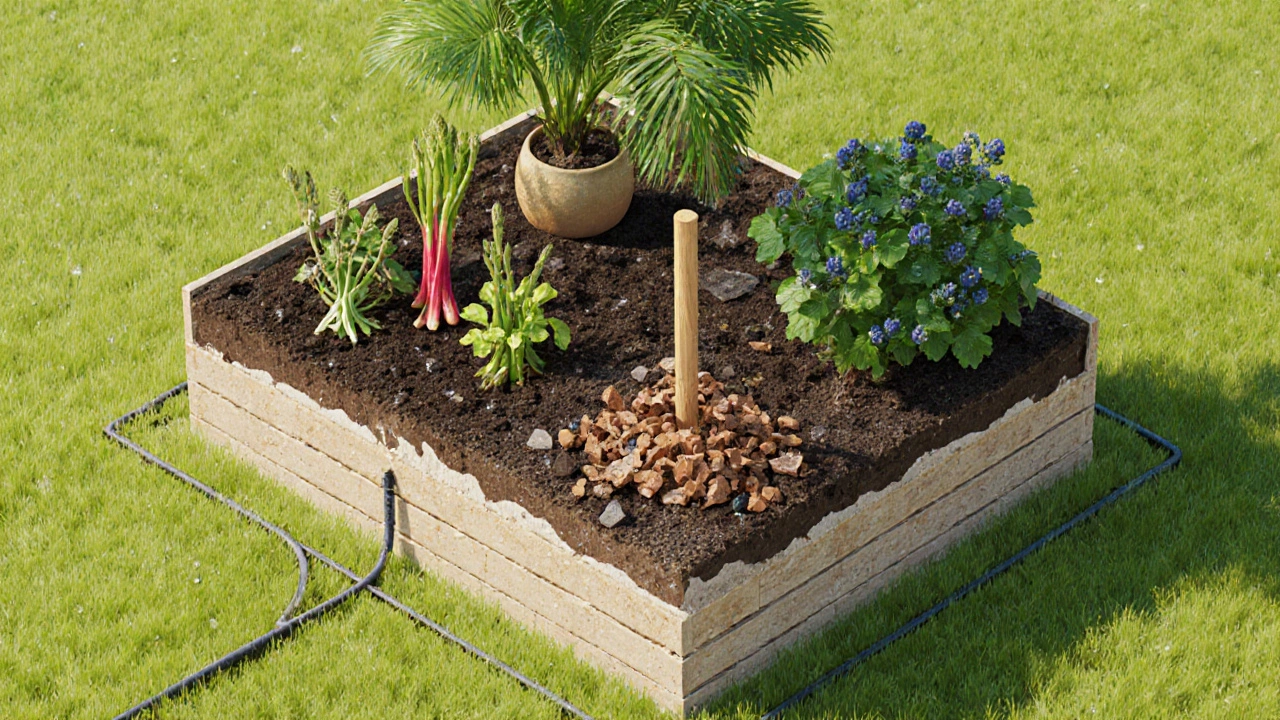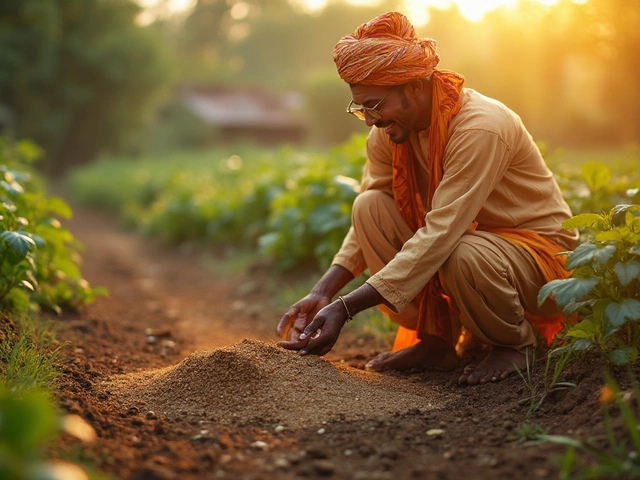Plants That Struggle in Raised Beds - What to Avoid

Plants That Struggle in Raised Beds - What to Avoid
Raised Bed Plant Compatibility Checker
Plants to Avoid in Raised Beds
Asparagus
Needs deep roots
Needs 24+ inch depth to thrive
Rhubarb
Large root network
Needs deep bed with extra compost
Fruit Trees
Exceeds bed size
Requires larger raised mound or traditional orchard
Large Shrubs
Root-to-stem ratio
Use deeper bed or individual containers
Rice
Requires standing water
Create a shallow basin within the bed
Watercress
Constant moisture needed
Install drip-line with mulch cover
Blueberries
Acidic, moisture-retentive soil
Amend with peat & sulfur, keep mulch
Patio Palms
Huge root ball
Plant in large pot inside the bed
Raised beds are a favorite for many gardeners because they warm up fast, drain well, and make weeding a breeze. But not every plant thrives in that confined space. Knowing which species tend to flop helps you plan a bed that stays productive season after season.
Why Some Plants Hate Raised Beds
Two main factors turn a raised bed from a happy home into a stress zone for certain plants:
- Root depth: Most raised beds are 12-18inches deep. Deep‑rooted species need twice that space to explore for water and nutrients.
- Moisture regime: The excellent drainage that benefits many veggies can dry out plants that love consistently wet soil.
When you match a plant’s natural needs to the bed’s structure, the odds of success skyrocket.
Plants That Typically Struggle
Below is a quick rundown of the most common culprits. Each entry starts with a Thing markup so search engines can pull the entity cleanly.
- Asparagus - a perennial that sends roots deep into the soil to survive winter. In a shallow bed the crowns dry out quickly, leaving spears thin and bitter.
- Rhubarb - another long‑lived plant that spreads a massive underground network. It competes fiercely for space, often choking out neighbouring veggies.
- Fruit trees (e.g., apple, plum) - their roots plunge far beyond the typical raised‑bed depth, and the confined volume can’t support the water demand of a growing tree.
- Large shrubs (e.g., roses, lilac) - they need room for both roots and a sturdy trunk. A bed that’s only a foot deep will cause leggy growth and poor flowering.
- Rice - thrives in standing water. The excellent drainage of a raised bed evaporates the moisture rice depends on.
- Watercress - a semi‑aquatic herb that prefers a continuously moist, shaded environment. Dry beds leave it wilted and bitter.
- Blueberries - need highly acidic, organic‑rich soil that retains moisture. The typical raised‑bed mix can be too alkaline unless you amend heavily.
- Patio palms (e.g., windmill palm) - these tropical palms develop a massive, fibrous root ball that quickly outgrows a shallow container.

How to Modify a Raised Bed for Tougher Plants
If you’re set on growing any of the above, a few tweaks can make a difference.
- Increase depth. Dig the bed out to at least 24inches for deep‑rooted perennials. Adding a layer of coarse sand or broken pottery at the bottom improves drainage while giving roots more room.
- Layered soil profile. Use a mix of garden loam, compost, and chunky organic matter at the base, then top with a finer, nutrient‑rich blend. The coarse layer lets water settle deeper, mimicking a natural profile.
- Install a water‑retention system. A simple drip‑line with a slow‑release emitter maintains a steady moisture level for water‑loving crops like rice or watercress.
- Amend pH. For acid‑loving plants such as blueberries, blend peat moss and elemental sulfur into the top 6‑inches of soil. Test the pH before planting and after the first harvest.
- Use containers within the bed. Place a large pot or grow‑bag for palms or small trees. The container holds the soil mass they need while still benefiting from the raised‑bed’s warmth.
Quick Reference Checklist
| Plant | Primary Issue | Adaptation Tip |
|---|---|---|
| Asparagus | Needs deep roots | Build 24‑inch depth or use in‑ground bed |
| Rhubarb | Large root network | Deep bed + extra compost |
| Fruit trees | Root spread exceeds bed size | Plant in larger raised mound or traditional orchard |
| Large shrubs | Root‑to‑stem ratio | Use deeper bed or individual containers |
| Rice | Requires standing water | Create a shallow basin within the bed |
| Watercress | Needs constant moisture | Install drip‑line with mulch cover |
| Blueberries | Acidic, moisture‑retentive soil | Amend with peat & sulfur, keep mulch |
| Patio palms | Huge root ball | Plant in large pot inside the bed |

Key Takeaways
- Deep‑rooted perennials like asparagus and rhubarb need more soil depth than the average raised bed provides.
- Plants that love wet conditions (rice, watercress) will dry out quickly unless you add a water‑retention system.
- Woody plants-fruit trees, large shrubs, palms-outgrow the limited root space and should be grown in larger mounds or containers.
- Adjusting bed depth, layering soil, managing pH, and using built‑in containers can rescue many borderline species.
- When in doubt, start with a soil‑depth test: dig a trial hole to the depth you plan to use, then check if the root system of your chosen plant fits comfortably.
Frequently Asked Questions
Can I grow carrots in a shallow raised bed?
Carrots prefer loose, deep soil to develop straight roots. A 12‑inch bed works for short varieties, but for standard Danvers or Nantes carrots aim for at least 18 inches of depth.
Do tomatoes need a deeper bed than most vegetables?
Tomatoes have a moderately deep root system but thrive in the warm, well‑drained environment that raised beds provide. A standard 12‑inch depth is usually sufficient, especially if you add a layer of compost at the bottom.
Is it worth building a raised bed for blueberries?
Yes, if you amend the mix with a lot of peat, pine bark, and acidic organic matter. Keep the pH between 4.5‑5.5 and mulch heavily to retain moisture.
How can I keep watercress moist without flooding the bed?
Lay a shallow tray lined with gravel at the bottom of the bed, fill it with a thin layer of water, and place the watercress on top. A slow‑drip emitter keeps the water level steady without splashing the rest of the garden.
What’s the easiest way to test if a raised bed is deep enough for a plant?
Dig a hole that matches the planned bed depth. Then, compare the length of a typical root system for that plant (information can be found in seed catalogs or extension bulletins). If the roots would hit the bottom, increase the depth or choose a different species.
About
Gardener Support India is your go-to online destination for expert advice on gardening and horticultural services in India. Whether you're a beginner or an experienced gardener, our platform offers extensive resources, tips, and support tailored to Indian climates and plant species. Explore a wide range of guides on plant care, sustainable gardening practices, and innovative gardening solutions. Connect with local experts to enhance your gardening experience and maintain a flourishing garden. Our dedicated services aim to empower Indian gardeners with the knowledge and tools needed for a successful gardening journey.
Latest Posts


Do Houseplants Need Misting? Truths About Indoor Plant Humidity Care
By Alden Thorne Jul 26, 2025

Should You Add Sand to Garden Soil?
By Alden Thorne Apr 2, 2025

Broccoli Farming in India: Profit Secrets, Tips, and Market Dynamics
By Alden Thorne Aug 7, 2025

Write a comment